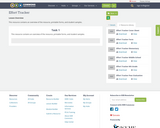
This resource contains an overview of the resource, printable forms, and student samples.
- Subject:
- Elementary Education
- English Language Arts
- Material Type:
- Lesson Plan
- Author:
- Stephanie Genco
- Date Added:
- 05/21/2019

This resource contains an overview of the resource, printable forms, and student samples.
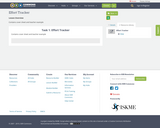
Contains cover sheet and teacher example
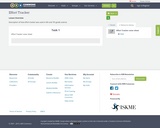
Description of how effort tracker was used in 6th and 7th grade science.
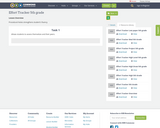
Procedural Notes strengthens student's fluency
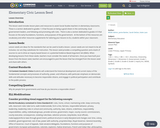
IntroductionThis lesson seed includes lesson plans and resources to assist Social Studies teachers in elementary classrooms. These is a section dedicated to grades 1-3 that focuses on being a good citizen in the community, local governement leaders, and following and promoting safe rules. There is also a section dedicated to grades 4-5 that focuses on the early foundations, functions, and purposes of the governement. At the bottom of the resources is an academic vocabulary word list for key concepts to consider providing visual support to assist you in tailoring your lessons to ELL students within your classroom, along with link to WIDA CAN DO Descriptors.Lesson Seeds:Lesson seeds are ideas for the standards that can be used to build a lesson. Lesson seeds are not meant to be all-inclusive, nor are they substitutes for instruction. This lesson seed provides a compelling question and a bank of sources to use to drive an inquiry based lesson or a potential Evidence Based Argument Set (EBAS). When developing lessons from these seeds, teachers must consider the needs of all learners. Once you have built your lesson from the lesson seed, teachers are encouraged to post the lesson that has emerged from this lesson seed and share with others.
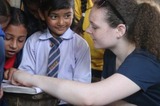
This book is intended for use by future teachers, written from the perspective of students who have taken Science Methods II. The student authors gathered and created resources to help prospective elementary cience teachers better understand science and feel confident in your abilities as a future teacher.
This book is divided into five parts which align with the Science Methods II course:
Physics
Space Science
Earth Science
Climate Science
Course Materials and Pedagogy
Within each part, the material is broken down into smaller chapters. Here you will find written explanations, video links, glossary terms, key takeaways, and practice quizzes to help you understand the material. This book is designed to be a flexible resource; use it as much or as little as you need throughout the course.
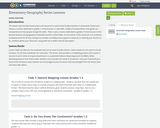
IntroductionThis lesson seed includes lesson plans and resources to assist Social Studies teachers in elementary classrooms. These is a section dedicated to grades 1-3 that focuses on map skills, modes of transportation, how goods are transported and how people change the earth. There is also a section dedicated to grades 4-5 that focuses on the physical features and grography of Maryland and the United States. At the bottom of the resources is an academic vocabulary word list for key concepts to consider providing visual support to assist you in tailoring your lessons to ELL students within your classroom, along with link to WIDA CAN DO Descriptors.Lesson Seeds:Lesson seeds are ideas for the standards that can be used to build a lesson. Lesson seeds are not meant to be all-inclusive, nor are they substitutes for instruction. This lesson seed provides a compelling question and a bank of sources to use to drive an inquiry based lesson or a potential Evidence Based Argument Set (EBAS). When developing lessons from these seeds, teachers must consider the needs of all learners. Once you have built your lesson from the lesson seed, teachers are encouraged to post the lesson that has emerged from this lesson seed and share with others.

This Unit is a collection resources that cover a 4 week span. This unit was designed with EL students in mind. Each day has vocabulary that will allow students learn key phrases and attributes of each career. Each week a different categories of careers is highlighted through books, activites, and videos. The categories include:Week 1: Farming CareersWeek 2: Health CareersWeek 3: Environmental CareersWeek 4: Art Careers Projected Funded by: PGE Foundation #PoweringPotentialProject Coordinated by: South Metro-Salem STEM Partnership

Please contribute content to this wiki that is critical to the teaching and learning of mathematics. Remember to include appropriate category tags to facilitate finding your page.

This lesson was created for use in the elemenatry PE classroom. It can be adapted for all age groups and ability levels. It allows flexibility for skills of all students. The only materials needed are hula hopps and there can be many variations added to make the game more complicated or can be simplified if necessary.
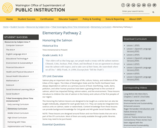
Salmon play an important role in the ways of life, culture, history, and resilience of the tribes of this region. The tribes of Washington State and the Pacific Northwest have always depended on salmon as a primary source of food. Overfishing, roads, dams, pollution, and other human practices have been a growing threat to the survival of salmon, which has impacted fishing, salmon-eaters, and the environment. These lessons introduce to children the role of salmon in the history and culture of the first peoples of our region.
The Honoring the Salmon lessons are designed to be taught as a series but can also be taught individually, adapted for each grade level, K-3. They can easily be integrated into science units on salmon, water or watersheds. Content knowledge from these lessons can provide background knowledge for 3rd grade and 4th grade Social Studies CBAs.
NOTE: These lessons are designed around fiction and non-fiction books that are not a part of the STI curriculum. Most of them are easily available through public libraries. Some may need to be purchased.
These lesson resources align to additional Washington State Social Studies, English Language Arts, Environmental and Sustainability, and Social Emotional Learning standards. A full standard curriculum document is included at the bottom of the Pathway 2 introduction page.
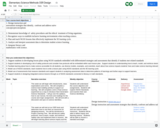
Onboarding for Substitute Teachers.
Your course-level objectives:
1.Design instruction and assessment strategies that identify, confront and address naïve
concepts/preconceptions
2. Demonstrate knowledge of safety procedures and the ethical treatment of living organisms.
3. Recognizes ways to establish inclusive learning environments when teaching science.
4. Plan and teach NGSS lessons that effectively implement the 5E learning cycle.
5. Analyze and interpret assessment data to determine student science learning.
6. Integrate literacy and mathematics with science.
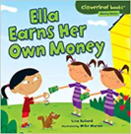
Within this collection you will find lessons, videos, handouts, and teacher guides you can use in your classroom. You will also find a brief summary of each resource with the source sited for further exploration, appropriate grade level, approximate lesson length, and learning standards.

These studies were conducted at primary school level in order to gain the ability to develop emotional skills and empathy in children.

This lesson enables students to see where their energy comes from and the future of renewable energy.
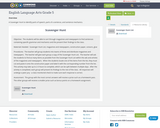
A Scavenger Hunt to identify parts of speech, parts of a sentence, and sentence mechanics.

This project discusses what an English Language Learner is and the challenges they face in English education. This project also discusses the misplacement of ELL students in SPED classes and why they are incorrectly classified as such.
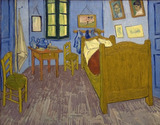
Students will practice reading, oral and listening skills based on the theme Van Gogh’s Bedroom in Arles, by working with a virtual tour of the painter’s bedroom and by producing their own recordings of podcasts about the virtual tour.

This Remote Learning Plan was created by Allison Pontious in collaboration with Rick Meyer as part of the 2020 ESU-NDE Remote Learning Plan Project. Educators worked with coaches to create Remote Learning Plans as a result of the COVID-19 pandemic.The attached Remote Learning Plan is designed for second grade math students. Students will divide circles and rectangles into 2, 3 or 4 equal parts. They will also describe the parts using the language of halves, thirds, fourths, half of, a third of, and a fourth of.
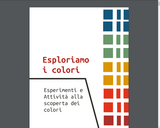
The text presents a series of activities to be carried out in groups on the theme of color. The activities involve art, science and technology and present a "hands on" approach that can be used as a starting point for structuring "project based learning" activities.
Il testo presenta una serie di attività da svolgere in gruppo sul tema del colore. Le attività coinvolgono l'arte, la scienza e la tecnologia e presenta un approccio «hands on» che può essere utilizzato come punto di partenza per strutturare attività di «project based learning».